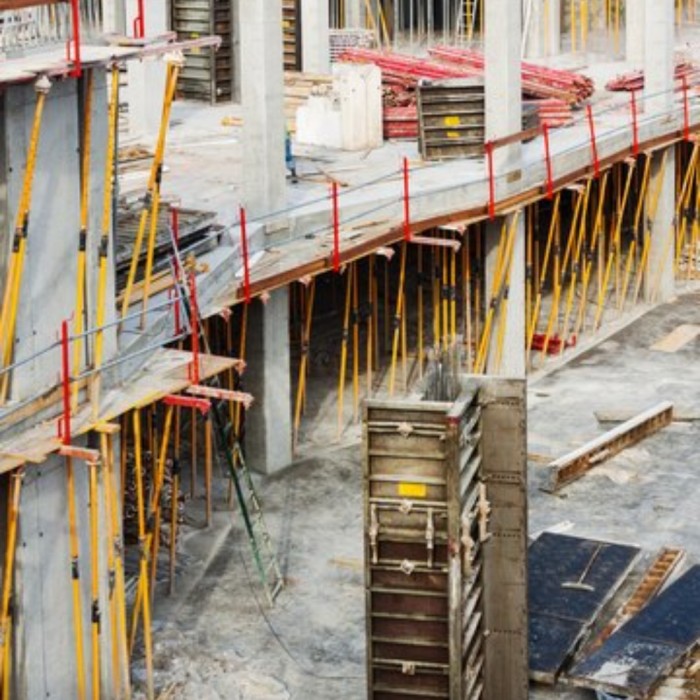Pile foundations have become very relevant in today’s buildings especially for those structures requiring to be forced or constructed on weak bearing capacity grounds. It was used over years to spread the load of a building or structure onto firmer ground at greater depth to provide safety and durability. Building constructions such as bridges, skyscrapers and other large buildings normally require pile foundations.
Pile foundations’ definition, benefits and categories according to their purpose and used material will be discussed in this guide.
What is a Pile Foundation?
A pile foundation is a form of deep foundation where long, slender, particularly constructed columns called piles are driven into the ground to transmit loads from structures above to stronger stratum below. These are normally constructed from steel, concrete or timber and are suitable where the existing soil at the site is weak and cannot support the structure to be constructed.
Pile foundations are particularly valuable in construction of high-rise buildings, bridges and other structures where a point-looking load is applied on the soil, or when the structure has to be found on weak and compressible subsoil.
Advantages of Pile Foundations
Pile foundations offer several benefits that make them a popular choice in construction:
Load Transfer to Stable Soil: They spread the weight of the structure to a more suitable, a lower stratum of soil whenever developing on weak or soft ground.
Durability: Physical factors such as foundation’s ability to withstand effects of weathering, decay and corrosion, make pile foundations to have long lifespan.
Space Efficiency: While other forms of foundations need larger areas, the pile foundations do this in less space and are therefore recommendable for use in areas where space is a limiting factor.
Customization: Piles can be supplied in specific sizes and they can be made out of specific material depending on the requirement of the project.
Uplift Prevention: For they restrain the structure from raising or moving within the regions predominantly at the risk of floods or winds.
Minimized Vibration and Erosion: Pile foundations dampen vibration and cuts down erosion around the foundation circle.
Cost and Time Efficiency: This is one of the reasons why pile foundations are used since they take little time to place, yet they are cheap and can help the constructors complete their work faster.
Environmentally Friendly: They can be less obtrusive most of the time than other forms of building foundations and, therefore, are environmentally friendly.
Types of Pile Foundations
Pile foundations are classified depending on their role and by the material that forms it. Let’s take a closer look at these categories.
Types of Pile Foundations Based on Function
End-Bearing Pile Foundation
According to type of load transfer, end-bearing piles or point bearing piles bear the structure load to another layer of strong soil or rock below the weak layers. These piles are especially applied at sites where there is a dense layer of soil or rock relatively close to the surface. An example of an end-bearing pile is a steel H-pile designed to address different types of soils and string forces and stresses. Nevertheless, H-piles may be susceptible to buckling apparently due to very high ground-bearing pressure.
Load-Bearing Pile Foundation
A type of pile is used to support some kinds of loads to the deeper layers of stable earth by pile driving below the ground surface. This type is frequently utilized in construction projects such as buildings and bridges on condition that the structure’s foundation is going to support immense weight. Some piles act as the structural support to the structure to be constructed and dispense loads on the soft soils resulting in less settlement.
Friction Pile Foundation
Skin friction piles that are also called floating piles depend on friction between the surface on the pile and the soil in order to transfer the load. The load is shared from top of the pile downwards to the bottom by means of frictional forces and comprehensively along the length of the pile. This type is frequently applied when the pile cannot achieve a strong bearing layer and is frequently used in high buildings or where excessive soil settlement takes place. Friction piles mostly consist of concrete or steel or timber in their preparation.
Sheet Pile Foundation
Sheet piles are thin plates that have interlocking formation derived from steel, plastic or wooden material. They are fixed vertically in the soil to provide a coherent line of defense especially in water or soil control structures that require retaining walls, seawalls etc. The sheet piles are generally installed by means of a hammer; hydraulic or pressing equipment or vibrating equipment and are considered one of the cheapest solutions which not only damage the environment.
Screw Piling Foundation
Helical piles or helix piles or screw piles are long steel piles deeply embedded in the base of which are several screw-like helices. These are spun into the ground with the help of rotary force and are applicable mostly at townhouses, offices and bridges among others. Screw piles give excellent support and hence load transfer ability to the ground even for the soft or unstable soil type.
Types of Pile Foundations Based on Material
Steel Pile Foundation
Steel piles are normally circular or H-sectioned, and may be driven or precast with concrete in a casing. They are especially strong and practice making them suitable for application in projects that need hefty load support. However, for steel piles the technique has the disadvantage of requiring protection against corrosion. The main types of steel piles include:
- H-Piles
- Pipe Piles
- Screw (Helical) Piles
Concrete Pile Foundation
Indeed concrete piles are used in most large developments including skyscrapers, bridges, and water tankage among others. They are available in various forms, including:
- Precast Concrete Piles
- Cast-in-Situ Piles
- Prestressed Concrete Piles
Cast-in-place piles are more cost effective and very much long lasting with a service life of 30-100 years. It is suitable for use in dry as well as in waterlogged soils.
Timber Pile Foundation
Timber piles are made from treated timber and are generally used in such soil conditions as are wet or otherwise unsuitable for other types of piles. Despite its relatively short service span as compared to steel or concrete ones, timber piles are relatively cheap and friendly to the environment. Types of timber piles include:
- Untreated Timber Piles for buildings and construction of related structures that are temporary in terms of nature.
- Treated Timber Piles for permanent structures, Tter for use in structures which is already affected by decay and insects
Composite Pile Foundation
Compact piles are made from two or more materials including steel and concrete or timber and concrete to boost strength and ability to bear load. Special use structures that have many beneficial usages are composite piles especially where there are soil changes or seismicity. They afford durability and flexible design in application.
Conclusion
Pile foundations are one of the products of Walls and Dreams which is very important in structures constructed on unfit ground since they improve structural design integrity. They guarantee protection of structures such as buildings, bridges and any other construction through shedding loads to better stratum of the soils. Hence, the piles which are found include end bearing piles, load bearing piles, steel piles, concrete piles and timber piles depending on the need of your construction project.
FAQs
What is the limit to the depth of piles in foundation?
Thus, the limit of foundation piles depends on; the soil properties; the load; and the design criteria among others. This is normally defined by the load capability of the ground and engineering specifications which are normally used in the construction.
What is the RCC pile foundation?
RCC pile foundations involve concrete piles with rebars; Reinforced Cement Concrete pile foundation. These piles transfer the load of a building to a deeper layer of soil or rock and therefore are suitable in weak or compressible soils.
What is the least depth for pile foundation?
The extent of penetration in a pile refusing is often varying but mostly 5m – 10m typically constrained by soil type and loading, and localized legislation. Geotechnical engineers decide the depth needed for each project depending on the tests done on soils and loads of structures.







